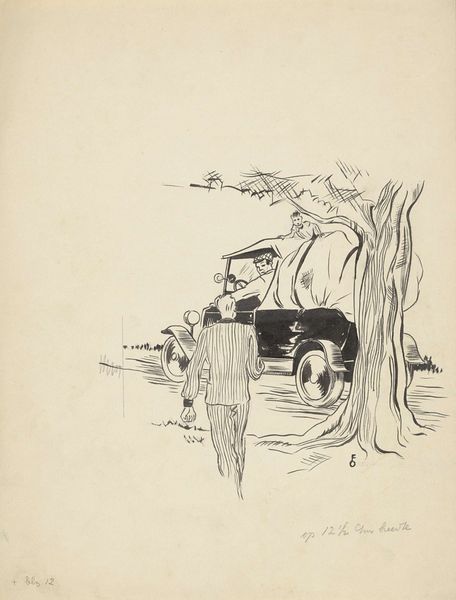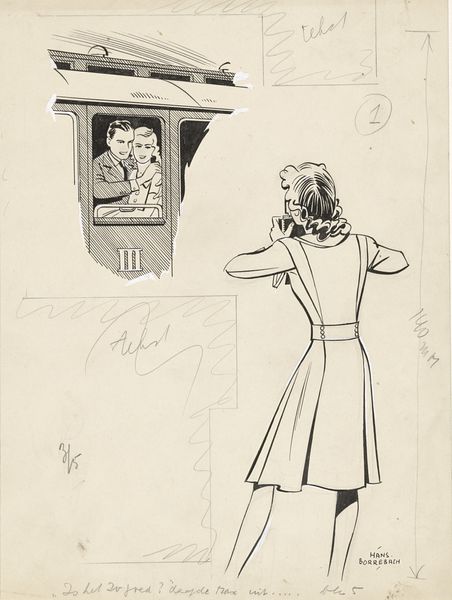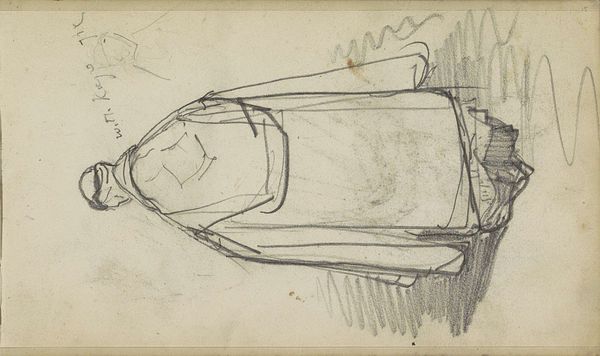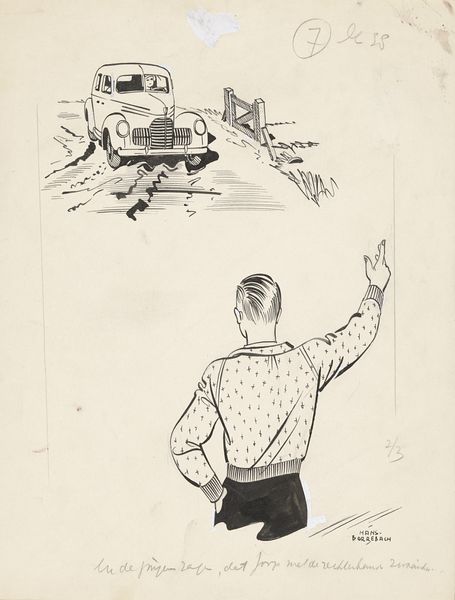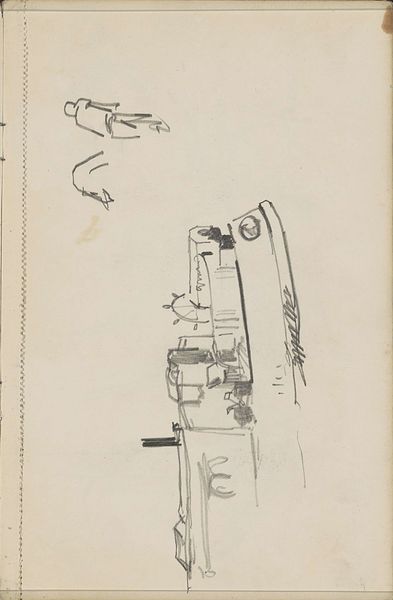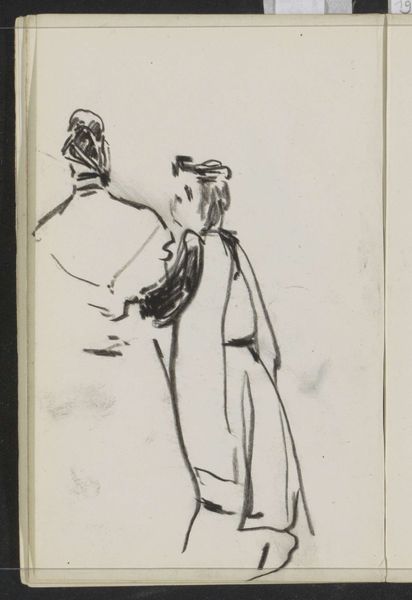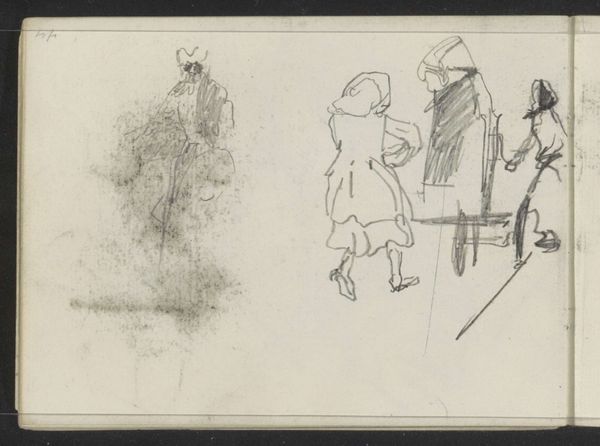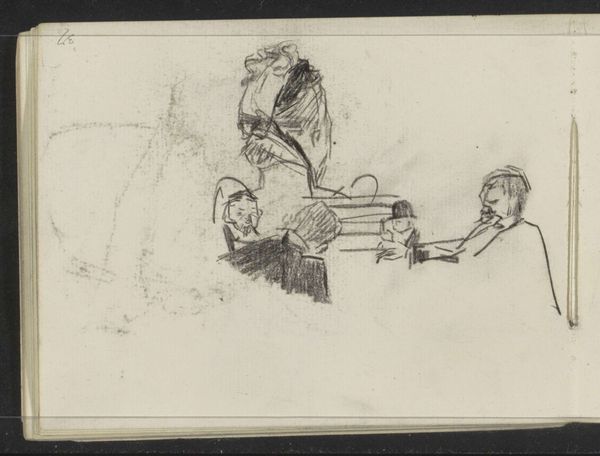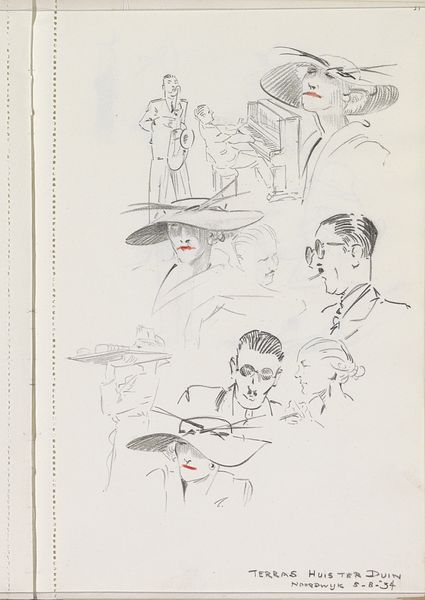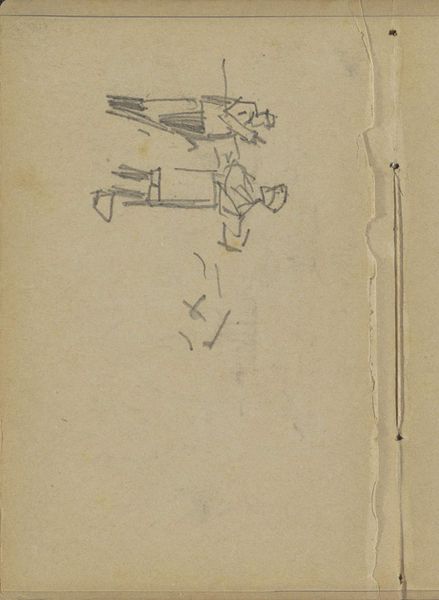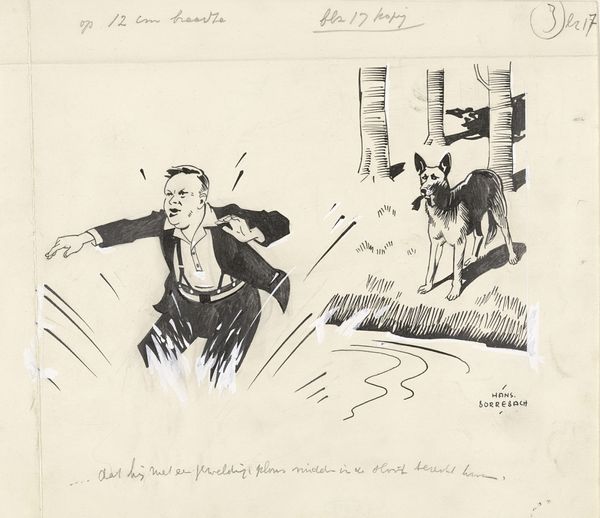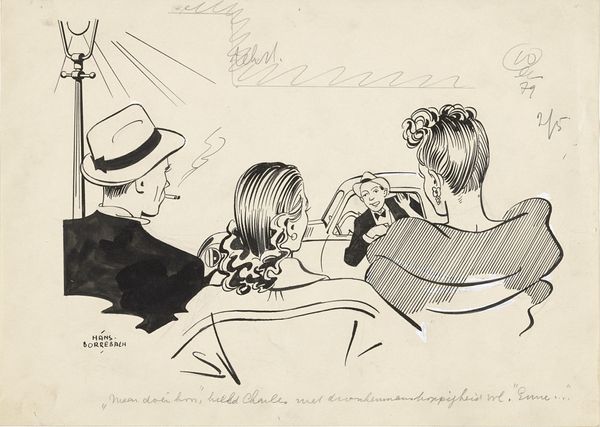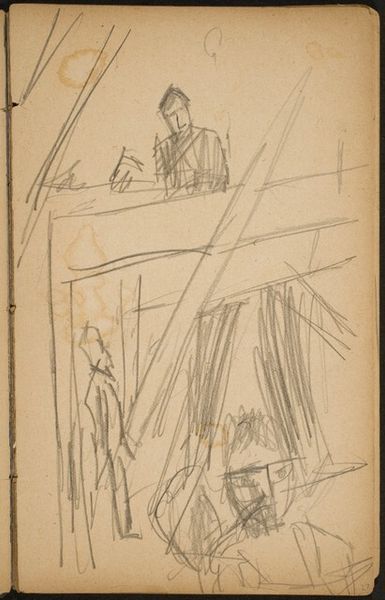
drawing, pen
#
drawing
#
comic strip sketch
#
quirky sketch
#
narrative-art
#
sketch book
#
personal sketchbook
#
idea generation sketch
#
sketchwork
#
sketchbook drawing
#
pen
#
cityscape
#
genre-painting
#
storyboard and sketchbook work
#
cartoon carciture
#
sketchbook art
Dimensions: height 240 mm, width 279 mm
Copyright: Rijks Museum: Open Domain
Curator: Here we have a drawing by Hans Borrebach entitled "Man opent het portier van een auto voor Pepita," created sometime before 1948. It appears to be pen on paper. What strikes you first about it? Editor: There's a real story unfolding, even though it’s just a sketch. It has a distinct mid-century mood and some humor too, the expressions on their faces is vivid. I feel like I'm interrupting something. Curator: Indeed, it feels like a snapshot from a larger narrative, fitting perhaps, given its comic strip style. Consider the artist’s choice of the car, with a massive grill like some sort of formidable creature. Editor: Right, the car as a status symbol, certainly. It almost overwhelms the figures in the composition, a not-so-subtle hint about their social dance and aspirations. Curator: Yes! And Borrebach is setting this up carefully. Notice the tree beside it? The bold hatching around its bark anchors the vehicle firmly within an implied space. Editor: I read that hatching as representing the solid reliability that underpins what's transpiring. Think about it; trees often symbolize stability and endurance. Curator: Interesting counterpoint with that bold machine and those social tensions simmering between Pepita and the gentleman... It speaks to the broader cultural values associated with progress and technological advancement following the interwar period, where consumer culture was starting to redefine social interactions. Editor: That brings into focus the handwritten annotation beneath, something about her being the owner of the wagon on a Sunday—a comment about car ownership of that era as leisure and empowerment, perhaps? The car here acts as both a literal vehicle and a symbol, conveying so much about its passengers. Curator: Borrebach’s work invites a close look at the subtleties within apparently simple scenes. It also is a commentary on evolving societal dynamics… a reminder that even quick sketches can reveal a lot about us. Editor: Precisely. Borrebach uses symbols like shorthand to get to something meaningful.
Comments
No comments
Be the first to comment and join the conversation on the ultimate creative platform.
